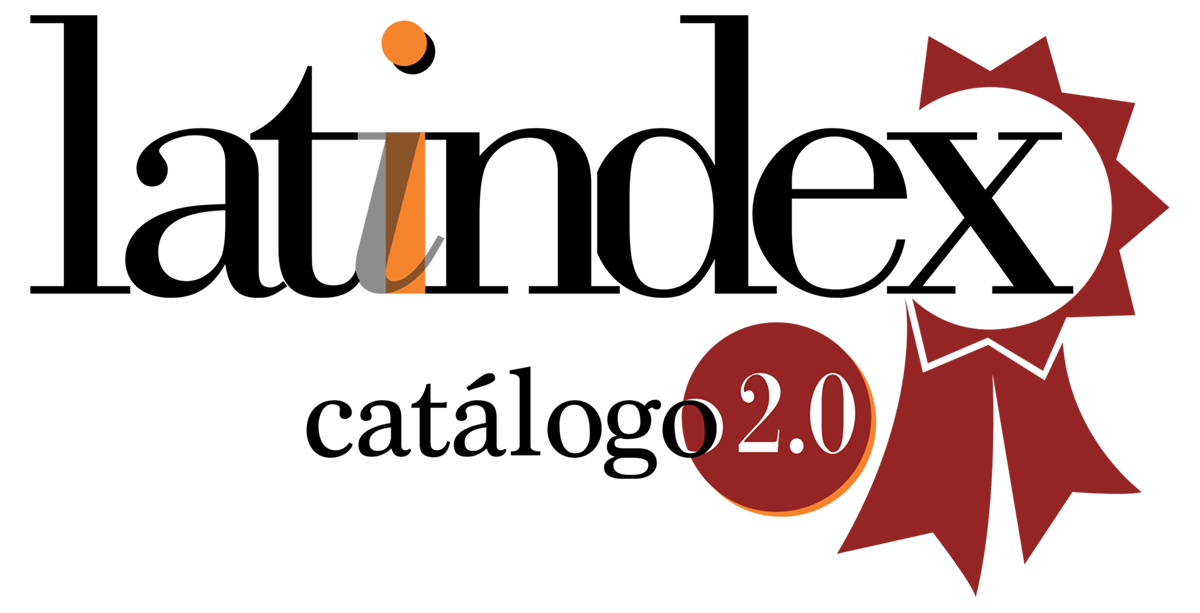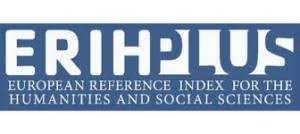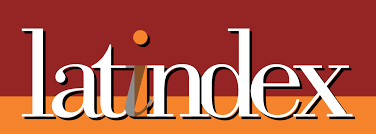Relación de la Capacidad Aeróbica, las Redes Atencionales y el Rendimiento Académico: Una Revisión Narrativa.
DOI:
https://doi.org/10.61144/0718-9397.2018.226Resumen
El rendimiento académico y los procesos de aprendizaje en educación superior están asociado a diversos factores, que pueden impactar de forma negativa o positiva. La atención, por una parte, ha sido de interés en la literatura científica por su impacto en los procesos de aprendizaje y como un importante sustrato neurobiológico de la cognición, específicamente las redes atencionales que plantean Posner y Petersen (2012). El crecimiento exponencial de la neurociencia en las últimas décadas sugirió que el sistema de atención se encuentra separado funcional y anatómicamente en tres redes, la red de alerta, de conflicto y la red de orientación. La atención y las redes atencionales se han relacionado con la capacidad aeróbica de las personas, la mayoría de los estudios las relacionan en personas con condiciones patológicas o en población adulta mayor. Sin duda que existe una relación entre la atención y la capacidad física de las personas, sin embargo, dicha relación no ha estado del todo dilucidada entre las redes atencionales y la capacidad aeróbica en estudiantes universitarios, y la relación que existe entre estos factores y el rendimiento académico. Esto toma real relevancia considerando los índices de obesidad y sedentarismo en Chile, ya que, además de la posible influencia en el rendimiento académico, podría incluso impactar en políticas de salud y educacionales.
Citas
American Academy of Pediatrics. (2011). ADHD: Clinical Practice Guideline for the Diagnosis, Evaluacion, and treatment of attention-deficit/Hyperactivity Disorder in Children and Adolescents. Pediatrics, 1-18.
Aston-Jones, G., & Cohen, J. (2005). An integrative theory of locus coeruleus-norepinephrine function: adaptive gain and optimal performance. Annual Review of Neuroscience, 403-450.
Atalah, E. (2012). Epidemiología de la Obesidad en Chile. Rev. Med. Clin. Condes, 117 – 123
Ayan, D., Cancela, J., & Montero, C. (2013). Academic Performance of Young Competitive Swimmers is Associated With Physical Activity Intensity and Its Predominant Metabolic Pathway: A Pilot Study. J Phys Act Health., 1415-1419.
Baker, L. D., Frank, L. L., Foster-Schubert, K., Green, P. S., Wilkinson, C. W., & McTiernan, A. (2010). Effects of aerobic exercise on mild cognitive impairment: A controlled trial. Arch Neurol, 71 - 79.
Botwinick, M., Carter, C., Braver, T., Barch, D., & Cohen, J. (2001). Conflict monitoring and cognitive control. Pychological Review, 624-652.
Calero Martínez, J. (2009). Determinantes internos y externos en el proceso de aprendizaje. Revista Iberoamericana de Educación, 1-11.
Carter, C. S., & Krug, M. K. (2012). Dynamic cognitive control and frontal-cingulate interactions. 89-98.
Centro de estudios del Ministerio de Educación. (2013). Inclusión del ranking en el proceso de admisión 2013 ¿Favorece realmente la equidad? SerieEvidencias, 1 - 7.
Ciria, L. F., Perakakis, P., Luqye-Casado, A., Morato, C., & Sanabria, D. (2017). The relationship between sustained attention and aerobic fitness in a group of young adults. Peer, 1 - 14.
Cooley, E., & Morris, R. (2009). Attention in children: A neuropsychologically based model for assessment. Developmental Neuropsychologically, 6(3), 239-274.
Corbetta M, Shulman GL. Control of goal-directed and stimulus-driven attention in the brain. Nat Rev Neurosci. 2002; 3:201–15.
Culpepper, L. (2011). Prevalence and impact of ADHD in college students. Journal Clinical Psychiatry, e30.
Davidson, M., & Marrocco, R. (2000). Local infusion of scopolamine into intraparietal cortex slows covert orienting in rhesus monkey. Journal of Neurophysiology, 1536-1549.
Dehaene, S., & Changeux, J.-P. (2011). Experimental and theoretical approaches to conscious processing. Neuron, 200-227.
Di Stasi, L. L., Diaz-Piedra, C., Suárez, J., McCamy, M. B., Martinez-Cond, S., Roca-Dorda, J., & Catena, A. (2015). Task complexity modulates pilot electroencephalographic activity during real flights. Psychophysiology, 951-956.
Ding, Y. H., Li, J., Rafols, J. A., Lai, Q., McAllisters, J. P., & Ding, Y. (2005). Increased astrocyte proliferation in rats after running exercise. Neurosci Lett, 160 - 164.
Dishman, R. K., Berthoud, H. R., Boot, F. W., Cotman, C. W., & Edgerton, V. R. (2006). The neurobiology of exercise. Obes Res, 345 - 356.
Duncan, J., & Owen, A. (2000). Common regions of the human frontal lobe recruited by diverse cognitive demands. Trends of Neurosciences, 475-483.
Dwyer, T., Sallis, J. F., Blizzard, L., Lazarus, R., & Dean, K. (2001). relation of Academic Performance to Physical Activity and Fitness in Children. Pedriatric Exercise Science, 225-238.
Elias, M. J., & Haynes, N. M. (2008). Social competence, social support, and academic achievement in minority, low-income, urban elemntary school children. School Psychology Quarterly, 474 - 495.
Enea, C., Boisseau, N., Fargeas -Gluck, M., Díaz, V., & Dugué, B. (2011). Circulating androgens in women: Exercise induced changes. Sport Med, 1 - 15.
Erickson, K. I., Prakash, R. S., Voss, M. W., Chaddock, L., Hu, L., Morris , K. S., & Kramer, A. F. (2009). Aerobic fitness is associated with hippocampal volume in elderly humans. Hippocampus, 1030 - 1039.
Everitt, B., & Robbins, T. (1997). Central cholinergic systems and cognition. Annual Review of Psychology, 649-684.
Fair, D., Dosenbach, N., Cohen, A., Schlaggar, B., & Petersen, S. (2008). A dual-networks architecture of top-down control. Trends in Cognitive Sciences, 99-105.
Fan, J., McCandliss, B., Sommer, T., Raz, A., & Posner, M. (2002). Testing the efficiency and independence of attentional networks. Journal of Cognitive Neuroscience, 340-347.
Fernandez-Duque, D., & Posner, M. (1997). Relating the mechanisms of orienting and alerting. Neuropsychologia, 477-486.
Firman, G. O. (2000). Fisiología del ejercicio Físico. Argentina: Facultad de Medicina de la UNNE.
Fossella, J., Posner, M., Fan, J., Swanson, J., & Pfaff, D. (2002). Attentional Phenotypes for the Analysis of Higher Mental Function. The scientific World, 217-223.
Frenzel, A. C., Goetz, T., Lüdtke, O., Pekrun, R., & Sutton, R. E. (2009). Emotional transmission in the classroom: Exploring ther relationship between teacher and student enjoyment. Journal of Educational Psyschology, 705 - 716.
García Ortega, M. I. (2001). Mecanismos atencionales y síndromes neuropsicológicos. Revista de Neurología, 463-467.
García Sevilla, J. (2014). Psicología de la atención. Madrid: Sintesis.
Gonzalez, J. (2003). Actividad física, deporte y vida: beneficios, perjuicios y sentido de la actividad física y el deporte. Bilbao, España: : OREKI.
Hillman, C. H., Erickson, K. L., & Kramer, A. F. (2008). Be smart, exercise your heart: Exercise effects on brain and cognition. Nat Rev Neurosci, 58 - 65.
Ivry, R., & Robertson, L. (1997). The Two Sides of Perception. Cognitive Neuroscience, 881-883.
Kahneman, D. (1973). Atention and effort. Englewood Cliffts: Prentice-Hall, 1997
Kalichman, L., Livshits, G., & Kobyliansky, E. (2004). Association between somatotypes and blood pressure in an adult chuvasha population. Ann Hum Biol, 466 - 476.
Kandel, E. (2001). Principios de Neurociencia. McGraw-Hill Interamericana de España.
Kramer, A. F. (2003). Fitness effects on the cognitive function of older adults: a meta-analytic study. Psychol Sci, 125 - 130.
Kuhl, P. (2011). Brian mechanisms in early lenguage acquisition. Neuron, 713-727.
Lareu, A. (1987). Social class differences in family school relationships: the importance of cultural capital. Sociology of education, 73 - 85.
Luria, A. R. (1984). Atención y memoria. Barcelona: Martinez Roca.
Luria, A.R. (1975). Atención y memoria. Barcelona: Martínez-Roca, 1986
Mack, A., Erol, M., & Clarke, J. (2015). Iconic memory is not a case of attention-free awareness. Consciousness and cognition, 291-299.
MacLeod, J., McConnell, M., Lawrence, M., Eskes, G., Klein, R., & Shore, D. (2010). Appraising the ANT: Psychometric and Theoretical Considerations of the Attention Network Test. Neuropsychology, 637-651.
MacMillan, N. (2007). Valoración de hábitos de alimentación, actividad física y condición nutricional en estudiantes de la pontificia universidad católica de valparaíso. Rev Chil Nutr.
Marrocco, R. (1998). Neurochemical Manipulations. En E. Awh, G. Baylis, J. Braun, D. Cantwell, V. Clark, M. Corbetta. S. Wigal, The Attentive Brain (págs. 35-50). Cambridge: Parasuraman.
McDonald, A., Cohen, J., Stenger, A., & Carter, C. (2000). Dissociating the role of the dorsolateral prefrontal and anterior cingulate cortex in congnitive control. Science, 1835-1838.
Meidman, M. J. (1970). Diseases of attention and perception. Psychosomatics, 249-350.
Miller , D. I., Taler, V., Davidson, P. S., & Messier, C. (2012). Measuring the impact of exercise on cognitive aging: methodological issues. Neurobiol Aging, 29 - 43.
Ochsner, K., Kosslyn, S., Cosgrove, R., Cassem, E., Price, B., Nierenberg, A., & Rauch, S. (2001). Deficits in visual cognition and attention following bilateral anterior cingulotomy. Neuropsychologia, 219-230.
Organización Mundial de la Salud. (2010). Recomendaciones mundiales sobre la actividad física en salud. Suiza: Organización Mundial de la Salud.
Perez Luño, A., & Sanchez Vásquez, R. (2000). Análisis exploratorio de las variables que condicionan el rendimiento académico. Sevilla, España: Universidad Pablo de Olavide.
Pérez, L., Padilla, C., & Parmentier, F. &. (2014). The Effects of Chronic Exercise on Attentional Networks. Journal PLOS ONE, 9(7), 1-8.
Pérez, L., Padilla, C., Parmentier, F. B., & Andrés, P. (2014). The Effects of Chronic Exercise on Attentional Networks. Plos One, 1 - 8.
Persuh, M., Genzer, B., & Melara, R. (2012). Iconic memory requires attention. Human Neuroscience, 1-8.
Pescatello, L. S., Arena, R., Riebe, D., & Thompson, P. D. (2013). Guidelines for exercise testing and prescription. Philadelphia: American College of sports medicine.
Petersen, S., & Posner, M. (2012). The attention system of the human brain: 20 years after. Annu Rev Neurosci, 35, 73-89.
Pinillos, J. L. (2006). Principios de Psicología. Lima: Alianza.
Posner, M. (1975). Pychobiology of attention. En M. Gazzaniga, Handbook of Psychobiology (págs. 441-480). New York: Blakamore.
Posner, M., & Fan, J. (s.f.). Attention as an Organ System.
Posner, M., & Petersen, S. (1990). The attention system of the human brain. Annu Rev Neurosci, 13, 25-42.
Posner, M., & Petersen, S. (1990). The Attention System of The Human Brain. Neuroscience, 25-42.
Prados Gallardo, M., Sánchez Jiménez, V., Spanchez-Queija, I., & del Rey Alamillo, R. (2014). Manual de psicología de la educación. Madrid: Club Universitario
Raichle, M., Feiz, J., Videen, T., MacLeod, A.-M., Pardo, J., Fox, P., & Petersen, S. (1994). Practice-related changes in human brain functional anatomy during nonmotor learning. Cerebral Cortex, 8-26.
Riquelme Uribe, D., Sepúlveda Guzmán, C., Muñoz Marambio, M., & Valenzuela Harrington, M. (2016). Ejercicio Físico y su influencia en los procesos cognitivos. Motricidad y Persona, 69 - 74
Rossello, M. (1994). El mecanismo atencional: estudio de las diferencias individuales. Revista de la Federación Española de Asociaciones de Psicología, 383-390.
Santander, J., Berner, J. E., Contreras, A. M., & Gómez, T. (2013). Prevalencia de déficit atencional en estudiantes de medicina de la Pontificia Universidad Católica de Chile. Revista Chilena de Neuro-psiquiatría, 169-174.
Secchi, J. D., & García, G. C. (2013). Aptitud física cardiorrespiratoria y riesgo cardiometabólico en personas adultas jóvenes. Rev Esp Salud Pública, 35 - 48.
Snowder, M., Steinman, L., Mochan, K., Grodstein, F., Prohaska, T., & Thurman, D. (2011). Effect of exercise on cognitive performance in community -swelling older adults: review of intervention trials and recommendations for public health practice and research. J Am Geriatr Aso, 704 - 716.
Suess, P. E., Porges, S. W., & Plude, D. J. (1994). Cardiac vagal tone and sustained attention in school-age children. Psychophysiology, 17-22.
Suijo, K., Inouse, S., Ohya, Y., Odagiri, Y., Takamiya, T., & Ishibashi , H. (2012). Resistance exercise enhances cognitive function in mouse. Int J Sports Med, 368 - 375.
Tammelin, T. (2003). Physical activity fromadolescence to adulthood and health-related fitness at age 31. Cross-sectional and longitudinal analyses of the Northern Finland Biry cohort of 1966. Oulu, Finland: Department of public health Science and General Practice, University of Oulu.
Tseg, C. N., Gau, B. S., & Lou, M. F. (2011). The effectiveness of exercise on improving cognitive function in older people: a systematic review. J Nurs Res, 119 - 131.
Troncoso, C., & Amaya, J. (2009). Factores sociales en las conductas alimentarias de estudiantes universitarios. Rev Chil Nutr, 1090 - 1097.
Turken, A., & Swick, D. (1999). Response selection in the human anterior cingulate cortex. Nature Neuroscience, 920-924.
Vaynman, S., Gomez-Pinilla, Y., & Gomez-Pinilla, F. (2003). Interplay between brain-derived neurotrophic factor and signal transduction modulators in the regulation of the effects of exercise on synaptic-plasticity. Neuroscience, 647 - 657.
Vega, M. (1984). Introducción a la psicología cognitiva. Madrid: Alianza.
Verburgh, L., Königs, M., Scherder, E. J., & Oosterlaan, J. (2014). Physical exercise and executive functions in preadolescent children, adolescent and young adults: a meta-analysis. Sports Med, 1-8.
Wengaard, E., Kristoffersen, M., Harris, A., & Gundersen, H. (2017). Cardiorespiratory Fitness Is Associated with Selective Attention in Healthy Male High-School Students. Frontiers in Human Neuroscience, 1-8.
Weinstein, A. M., Voss, M. W., Prakash, R. S., Chaddock, L., & Szabo, A. (2012). The association between aerobic fitness and executive funcion is mediated by prefrontal cortex volume. Brain Behav Inmun, 811 - 819.
Yañez, P. (2016). El proceso de aprendizaje: fases y elementos fundamentales. Revista San Griego, 71 - 81.
Cómo citar
Licencia
Los autores/as conservarán sus derechos de autor y garantizarán a la revista el derecho de primera publicación de su obra, el cual estará simultáneamente sujeto a la Licencia de reconocimiento de Creative Commons (CC BY-NC-ND) 4.0 que permite a terceros compartir la obra siempre que se indique su autor y se comparta el documento, en formato pdf y con la paginación del número original, a través del que este ha sido publicado por la revista. Siguiendo las definiciones establecidas por la licencia (ver: https://creativecommons.org/licenses/by-nc-nd/4.0/deed.es) los números de la revistas seguirán los siguientes términos:
-
Atribución — Usted debe dar crédito de manera adecuada, brindar un enlace a la licencia, e indicar si se han realizado cambios. Puede hacerlo en cualquier forma razonable, pero no de forma tal que sugiera que usted o su uso tienen el apoyo de la licenciante.
-
No Comercial — Usted no puede hacer uso del material con propósitos comerciales.
-
Sin Derivadas — Si remezcla, transforma o crea a partir del material, no podrá distribuir el material modificado.
- No hay restricciones adicionales — No puede aplicar términos legales ni medidas tecnológicas que restrinjan legalmente a otras a hacer cualquier uso permitido por la licencia.












